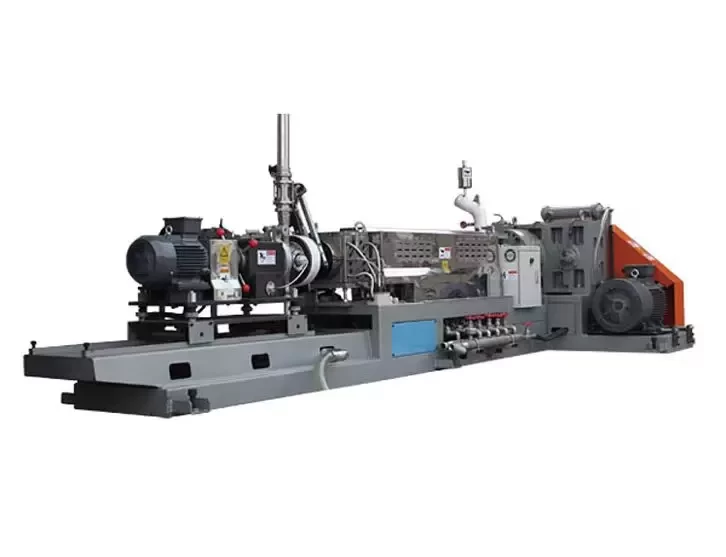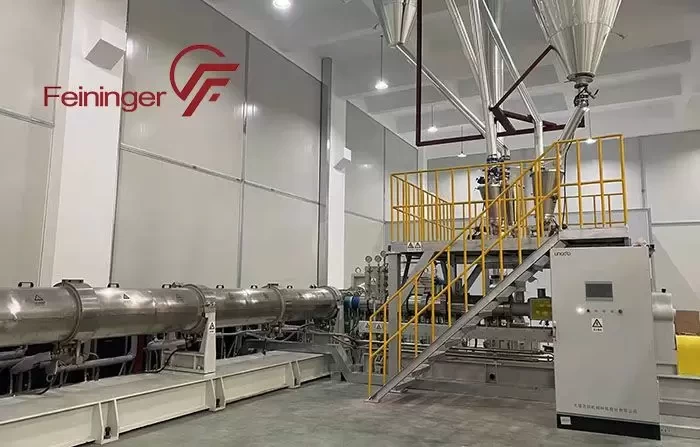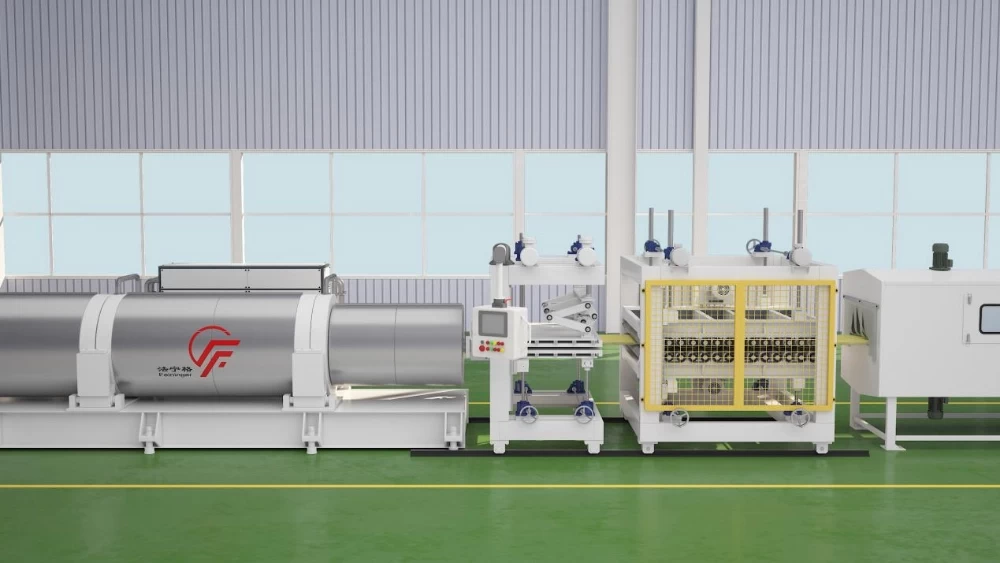Recycling pelletizers are an essential part of the plastic recycling industry, transforming plastic waste into reusable pellets that can be used in various manufacturing processes. Among the various pelletizing technologies available, the underwater pelletizing system by Feininger stands out for its advanced design and superior efficiency. This guide will explain how recycling pelletizers work, focusing on the innovative features of Feininger’s underwater pelletizing system.
What is a Recycling Pelletizer?
A recycling pelletizer is a machine that converts plastic waste into small, uniform pellets. These pellets can then be melted and remolded into new plastic products. The process involves cutting molten plastic into small pieces as it exits the extruder. The most common types of pelletizers include strand pelletizers, water ring pelletizers, and underwater pelletizers.
How Underwater Pelletizers Work
The Basic Process
Underwater pelletizers operate by cutting plastic strands into pellets while they are submerged in water. This process offers several advantages over other pelletizing methods, such as better cooling efficiency and reduced dust generation.
- Extrusion: The plastic waste is melted in an extruder, forming a continuous strand of molten plastic.
- Cutting: As the molten plastic exits the die holes, it is immediately cut into small pellets by a rotating cutting mechanism.
- Cooling: The pellets are instantly cooled by the surrounding water, solidifying them quickly.
- Separation: The pellets are then separated from the water and dried, making them ready for reuse in manufacturing processes.
Key Features of Feininger’s Underwater Pelletizing System
Feininger’s underwater pelletizing system incorporates several advanced features that enhance its performance and reliability.
1. Stable Pressure and Temperature Control
The system is designed to maintain stable pressure and precise temperature control throughout the pelletizing process. This ensures consistent pellet quality and reduces the risk of defects.
2. Unique Template Design
The unique template design of Feininger’s system ensures ideal thermal insulation. This design effectively solves the problem of condensation and empty spaces caused by large temperature differences between the die plate and the water. It also prevents the melt from setting in the die holes, ensuring a smooth pelletizing process.
3. Minimized Heat Loss
Feininger’s underwater pelletizing system reduces heat loss by 95%. This is achieved through its innovative design, which minimizes temperature fluctuations and maintains a stable thermal environment during the pelletizing process.
4. Reliable Granulation Process
The process stability of Feininger’s pelletizer ensures reliable granulation with minimal fluctuations. This reliability is crucial for producing high-quality pellets that meet industry standards.
Advantages of Underwater Pelletizing
1. Efficient Cooling
The immediate submersion of pellets in water provides efficient cooling, which is essential for maintaining the shape and quality of the pellets. This method is more effective than air cooling or other cooling techniques.
2. Reduced Dust Generation
Underwater pelletizing generates less dust compared to other methods, such as strand pelletizing. This is beneficial for maintaining a clean working environment and reducing the need for additional dust control measures.
3. Uniform Pellet Size
The precise cutting mechanism and consistent cooling environment result in uniform pellet size, which is important for subsequent manufacturing processes. Uniform pellets ensure smoother feeding and melting in future applications.
4. Energy Efficiency
The design of Feininger’s underwater pelletizing system minimizes energy consumption by reducing heat loss and maintaining stable process conditions. This leads to lower operational costs and improved sustainability.
Applications of Recycled Pellets
The pellets produced by recycling pelletizers can be used in various applications, including:
- Injection Molding: Recycled pellets are melted and injected into molds to produce new plastic parts and products.
- Blow Molding: Used to create hollow plastic products such as bottles and containers.
- Extrusion: Recycled pellets are extruded into continuous shapes, such as pipes, sheets, and films.
Conclusion
Recycling pelletizers, particularly underwater pelletizing systems like those offered by Feininger, play a crucial role in transforming plastic waste into valuable resources. By maintaining stable pressure and temperature, utilizing a unique template design, and minimizing heat loss, Feininger’s system ensures efficient and reliable pellet production. Understanding how these systems work and their benefits can help businesses optimize their recycling processes and contribute to a more sustainable future.

 27 Jun 2024
27 Jun 2024 
 26 Dec 2024
26 Dec 2024 
 24 Nov 2023
24 Nov 2023